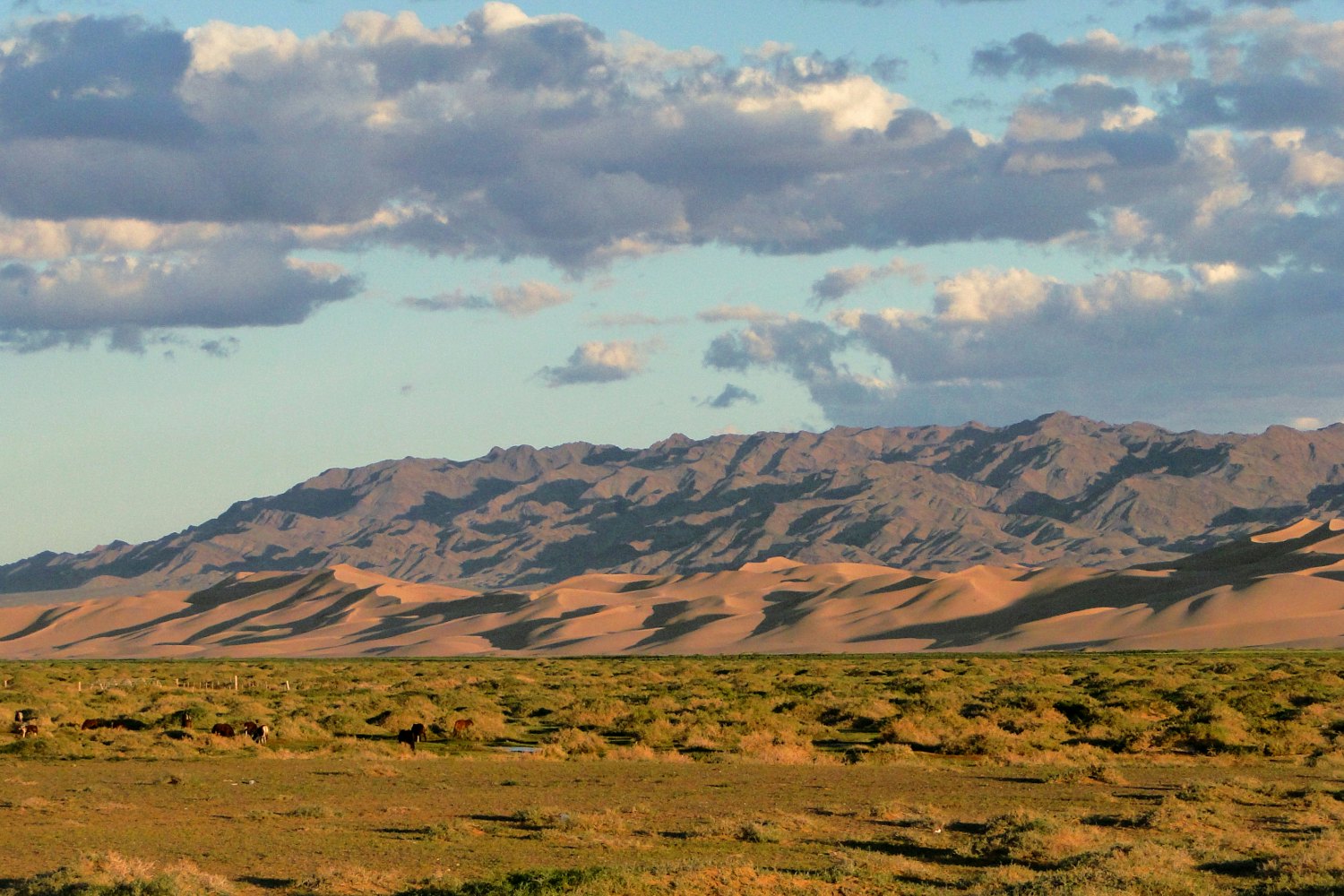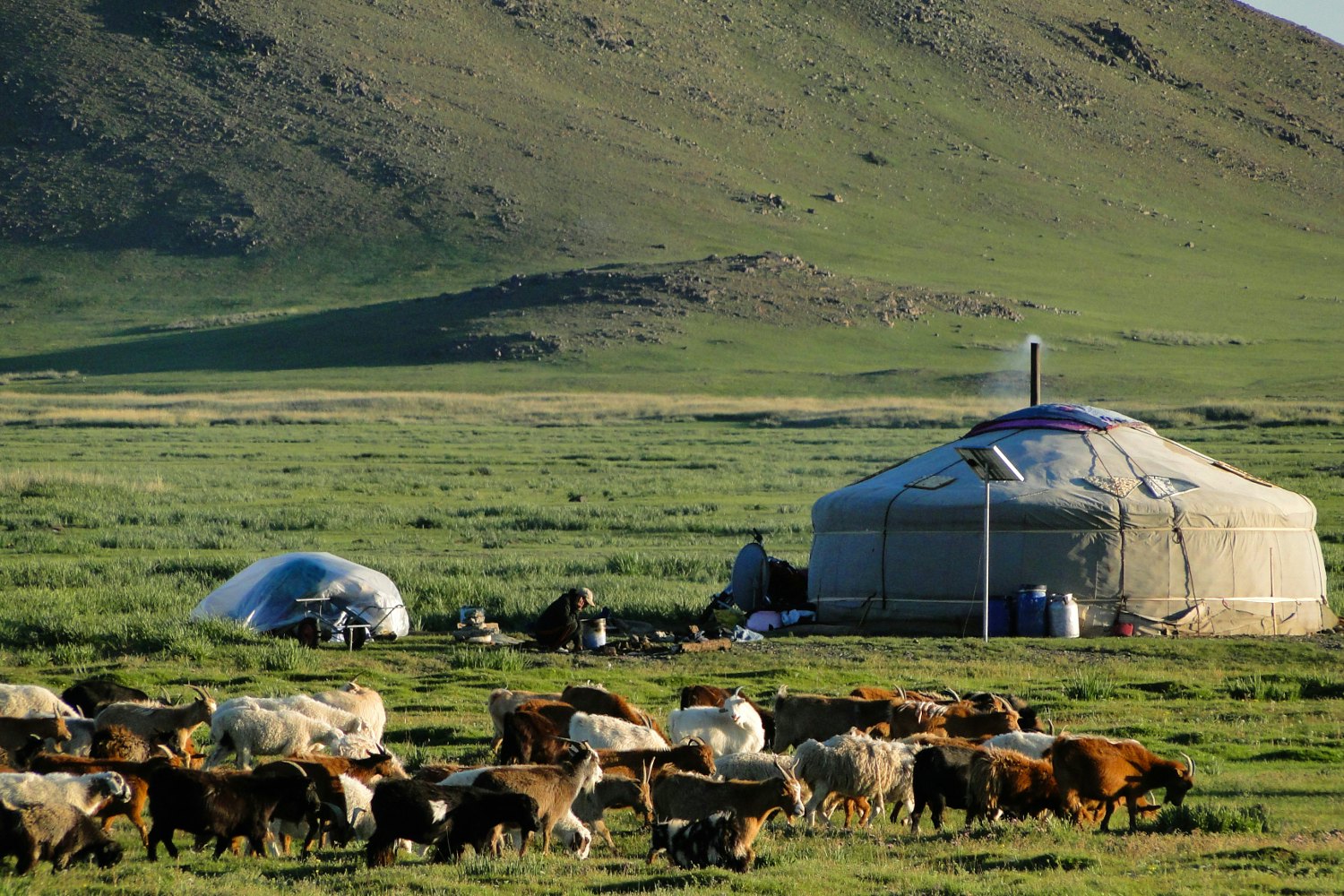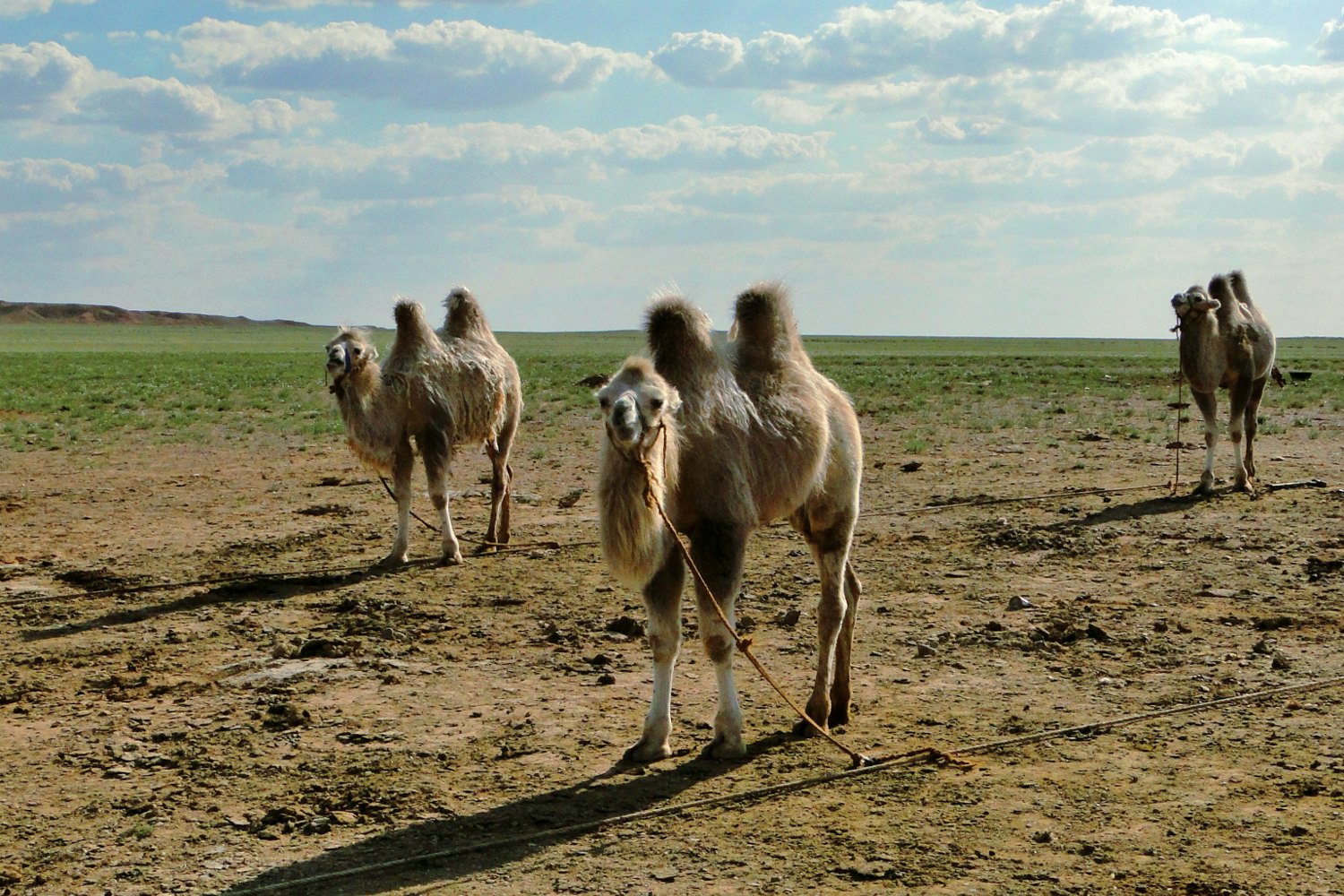

Adventure in the Gobi: grab some friends and go for a drive. Image by Stephen Lioy / Lonely Planet
Giant sand dunes fringed by sun-scorched valleys. Primordial fossils hidden within flaming-red cliffs. The sun setting pink and purple over a Mongolian yurt. Few experiences bring together offbeat adventure and epic road-tripping quite like bouncing through Mongolia's Gobi Desert in the rear-facing seat of an off-road van, hoping against hope that the next little village has a couple of cans of petrol.
Hiring a van and a driver and spending a week cruising around the Gobi is one of the highlights of an adventurer's trip to Mongolia. The region’s main natural sights are all less than 150km from one another, making an easy interchangeable loop that starts and ends in the capital, Ulaanbaatar.

Charge up your mp3 player, grab a few handfuls of camel cheese and set off on one of the best drives this side of Siberia.
Prepping in Ulaanbaatar
Before any of the photogenic bits, the adventure starts in Mongolia’s capital city, Ulaanbaatar. You’ll need to hire a van and driver, possibly source a group of travellers to fill it with (and share costs), and get enough supplies to keep the lot of you in good shape for the duration.

You’ll need to negotiate a set route or daily distance with your driver, either agreeing on the places you want to go or just driving each day in the direction that seems most promising. Sometimes drivers will have suggestions for a route based on the weather and road conditions, or places where they know they can make camp or find a ger-stay. Stock up on food (otherwise it’s camel cheese for a week!), fill up with plenty of petrol, and it's time to hit the Gobi.

Most travellers end up in old-school UAZ vans (utilitarian Russian vehicles originally for military uses) that are, shall we say, light on safety equipment and creature comforts. Prepare to be covered in dust, absolutely battered by a combination of rough roads and a vehicle with no handles, and often hundreds of kilometers from the nearest flushing toilet. Still sound like fun? Then embrace your inner Indiana Jones and get out into the wilds of Mongolia.
Leg 1: Valley of the Vultures

Amidst the wide-open spaces of the Gobi, the narrow walls of the Yolyn Am seem somehow out-of-place, as do the ice floes that have historically covered the valley floor even through the summer. Neither the ice nor the namesake Yol vultures stick around very long these days, but it still makes an easy day hike (or a challenging scramble) and the craggy canyonlands make a nice change of scenery from the desert landscapes that characterise most of the region.
Leg 2: Flaming Cliffs

If dunes and dromedaries aren't adventurous enough for you, how about following the trail of the man that some claim to be the real-life inspiration for Indiana Jones? In Bayanzag, the area he dubbed the Flaming Cliffs for their deep sunset hues, Roy Chapman Andrews discovered the first scientifically-recognised fossils of dinosaur eggs in 1923. Though the excavations have long moved on, the desolate desert that stretches to the horizon and beyond continues to draw travellers looking for adventure and beautiful sunsets.
Leg 3: Climbing the Khongoryn dunes

The Mongolian Gobi at Khongoryn Els is the desert you've always dreamed of: sand dunes up to 300m high and stretching nearly 12km into the distance. Ride a camel from the nearest nomad camp to the foot of the dunes, climb to the top as your steps slide backwards down the sandy slope, and stare out over Asia's largest desert. (Just don't turn your back on that camel for too long – they're decidedly cranky and might not be waiting for you when you get back!)
Leg 4: Exploring the ruins of Kharkhorin

While actually outside the Gobi , the Erdene Zuu Khiid is absolutely worth a detour on the drive to or from the desert. Located on the site of one of the once-prosperous 13th-century capitals of the Mongol empire, the city withered after Kublai Khan abandoned the site in favour of the area we today know as Beijing. The monastery itself, constructed to mark the 1585 establishment of Tibetan Buddhism as the official state religion, is believed to have been built from the repurposed stones of the ancient city. Though the modern monastic community is significantly smaller than it was at its historical peak, even just the approach to the impressive fortress-like wall of stupas is worth the drive.
Sleeping and eating

Though you might occasionally wind up camping wild in a tent, the end of most days will see your driver steering towards the nearest ger (yurt) camp. These traditional nomad tents (similar to the yurts found throughout Central Asia) dot most of rural Mongolia, including the Gobi. A stop will almost certainly include a bowl of tea or airag, a slightly fermented horse milk, while a night spent in the ger can easily turn into a meaty feast...followed by tea and airag.

Most of the meat, milk and dairy in Mongolia is from home-grown livestock raised and consumed by these same nomad families; but while the rest of the country abounds in horse, goats, and sheep (and even the occasional reindeer), the Gobi region also relies heavily on camels. That means camel meat, camel milk, and the dreaded camel cheese. The cheese, actually a hardened curd but very rarely referred to as such, is particularly unusual. Not only does it taste like sweat smells, but it's also hard enough that it takes serious commitment to finish even a single piece. Worth trying exactly once, if only for the experience.
















